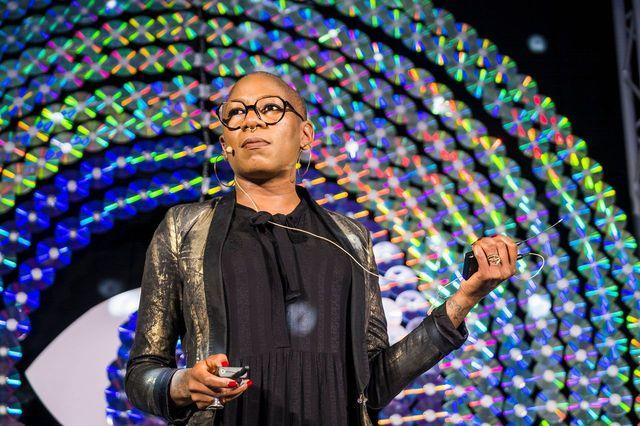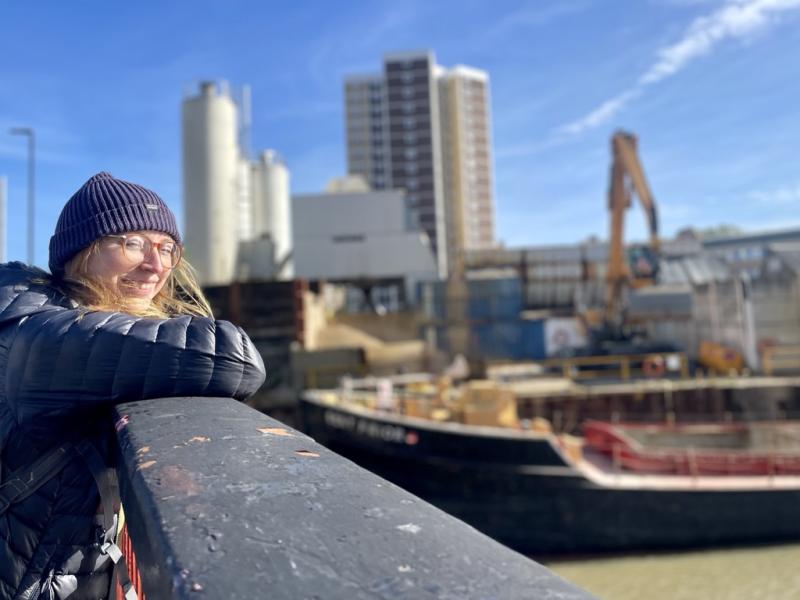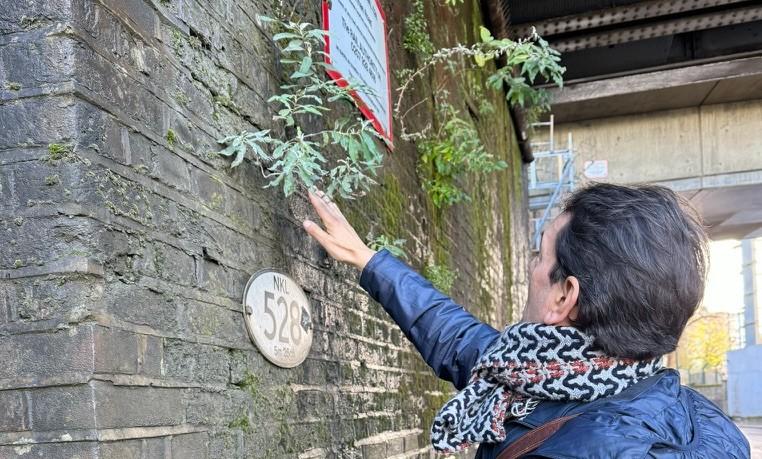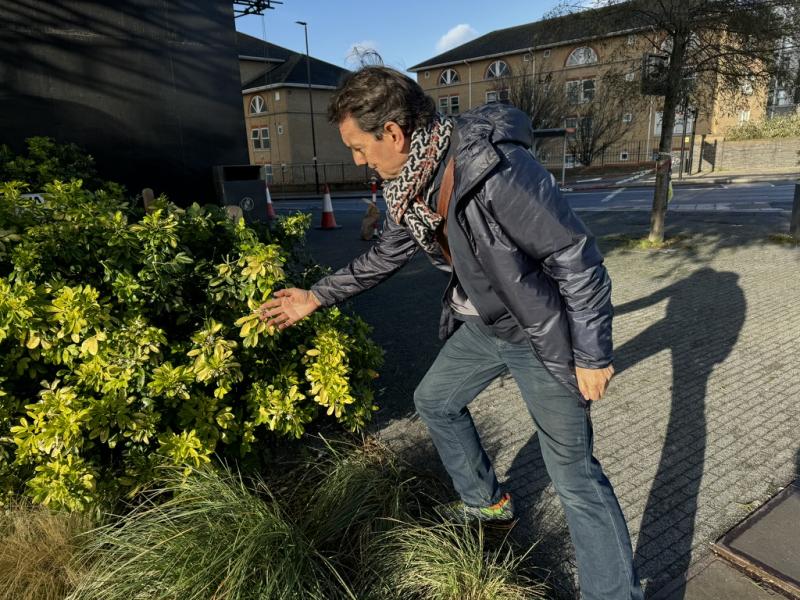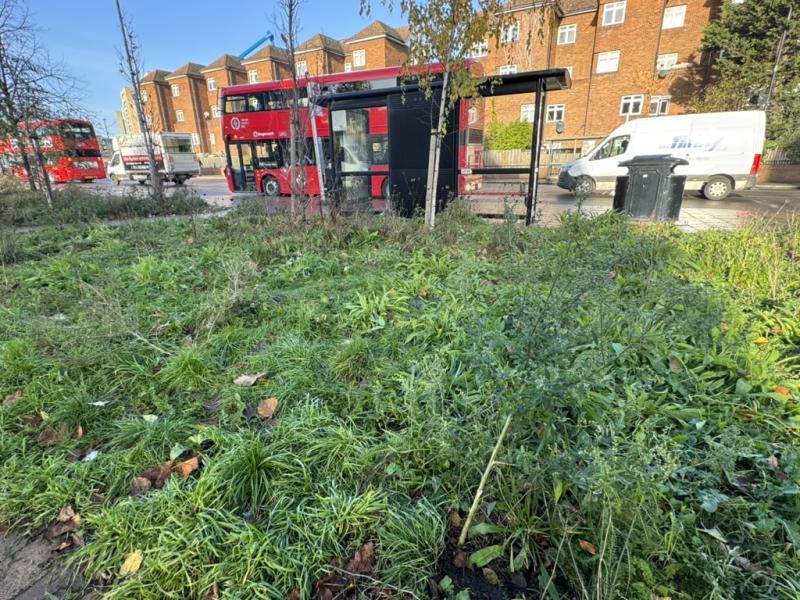Joanna Watson08 Apr 2024
How does one person’s unique experience translate into something that can be shared and experienced collectively?
How different is that experience when mediated through an artist’s eyes and ears from the sensory experience on the ground?
How does that experience alter when it’s shaped from an immersion involving all the senses in one particular place and at one point in time? And what sense of place is created in future listeners?
Can the experience of creating a soundscape from a shared journey– looking and listening with intention and thoughtfulness - alter a person’s connection with nature and place?
Can feeling better connected to other living things engender a wish to protect them?
All these questions occur to me as I talk to artist and experience designer Adah Parris. Adah is working with Friends of the Earth in exploring a project called Earth Echoes, which has received funding from the Joseph Rowntree Collective Imaginations fund.
Earth Echoes feeds the imagination
We know that many people feel disconnected and alienated from nature and that it can be hard to find your place in nature in an increasingly urbanised and built environment. We know that it is harder to involve people in caring for nature – which can be seen as untidy and uncontrolled – if they live somewhere without access to flourishing wildlife and greenery. And yet there can be enchantment and new ways of seeing round every corner.
This is Adah’s mission in Earth Echoes. She wants to make the invisible visible – go beyond the surface of things. “I am creating multi-sensory spaces for people to experience the world in the way that my neuro-divergent brain does, while leaving space for them to have their own journey,” she explains. “It’s virtual reality without the headsets”. Taking people on a vision quest is a practice that she uses to help organisations like Friends of the Earth find different ways of engaging people in the climate and nature crises. She judges success when people have more questions at the end of an experience than when they started.
Adah’s wisdom walks
On the surface it sounds like a simple process. But it is multi-layered. Adah invites a companion to accompany her on a walk in a familiar place. These ‘wisdom walks’ took place in Creekside, Greenwich in London, where she already has a strong sense of place from growing up there. She creates a multi-sensory experience through helping her companion to look, smell, listen, observe and question.
Before they start, they meet in a café to chat and Adah explores how they feel about where they are, their fears, concerns, joys so she can prepare herself to deal with any unexpected emotions that could be unlocked. She then filters the experience into the sounds they capture on their journey and turns this into a soundscape that can be widely shared.
They go on the walk she has researched and planned. The walks are supposed to last 90 minutes but they stop to discuss and after a time check, they carry on.
“I didn't necessarily always ask about sound. I asked, what do you feel? And most of them went, I feel relaxed. OK, and now what can you hear? And some people picked up that they could hear the industrial sounds, which is why they're still quite strong in the soundscape. And then I said, well, what else do you notice? And some people noticed their body temperature felt different. They felt warmer. They felt less distracted with all the other crap of life that they've got going on, and they became present. Less anxious. More curious. More playful”.
Making connections
The individuals have their own unique experience even though it’s curated by Adah. And their experience helps inform the way Adah thinks about capturing their journey.
“I deliberately use sounds that are familiar to most people. I put the sounds together and bring other people in as I recreate the walk in my head. And it's like I'm taking a sound photograph. A snapshot of that moment recognising that different people are going to listen and hear different things. One of the participants initially only focused on the sounds of humans and said she couldn’t hear nature.That's why it starts with that big industrial sound, the scraping metal of the DLR trains, but the sound of the bee is a constant. Given this is an area that's deprived of ample green spaces, how could I subtly introduce the things that they're overlooking? And as you're going deeper into the walk, how do I gently redress the balance between what most people currently hear and the thing that we would like them to remember?”
Adah uses the walk to help people make connections. What they might see as an untidy bit of re-wilding helps feed bees. Bees make honey which can provide food for humans and help certain human conditions. And after conversations like this, her companion wanted to know how to get involved. “Because I would do more now that I know that it would help me”. It’s an important insight that urbanites may have an increasingly utilitarian view of what nature can do for them and this framing is an important way to start engaging them.
Imagination and immersion
Adah is the guide but every experience is unique. She says “the best virtual environment is your own imagination. Interactivity, immersion and sensory feedback. What I love doing is taking really big complex ideas and turning them into immersive experiences that allow people to connect with the idea rather than having to look at the big data”.
It’s not about educating people. A recent trip to Brazil reinforced Adah’s understanding that people aren’t separate from nature – but they need to remember and rediscover their connection with it. “Giving people agency about how they engage, if they do and what their own memories are, rather than me trying to plant something and get them to understand. I create safe and brave spaces for people to take a moment's pause”.
As an artist, she feels like she’s in some ways manipulating time because she gives people the opportunity to pause. A quote from composer Claude Debussy stays with her “Music is the silence between the notes” and with her soundscapes she’s looking to find those silences within the cacophony we’re surrounded by. Setting pause and stillness against the telescoping of time and speed of change, driven by human greed and curiosity.
Our responsibility to the future
The importance of this for future generations is immeasurable – and a question she’s always asking is What kind of ancestor do you want to be? to make people pay attention and think about the impact we humans are having on climate and nature. “It's recognising that we need to be conscious about the things that we are putting out into the world. And then every decision or indecision still creates a ripple effect and we need to be conscious of that”.
Adah sees herself as a translator. Not just offering another kind of language but translating people from one state to another, creating new relationships. I asked her how people might interact with her soundscape and she had a wonderful example in that touchstone of local opinion, a cab driver she talked to about her work. He was so enthused by her wisdom walk story that he promised to play the soundscape to his wife who was suffering from depression. And then take her on a walk and try to recreate the journey through the sounds they’d heard on the digital version - Adah’s process in reverse.
I didn't create Cyborg shamanism, which is my framework. I didn't create that. I just remembered it. I’m a translator. Because I’ve had all these different jobs, I'm able to speak the world of tech and quantum mechanics and spirituality and creativity. And I just translate it and sound seems to be my way of being able to, in many ways, democratise it.
She has lots of plans. Could she create a sound map of an area inviting people to send her the sounds they capture? Could she organise more community walks to unlock the experience of that space for more people?
Thinking about impact
Creating that consciousness of life beyond ourselves is fundamental. If people don’t really see a place and the living things that populate it, they won’t value it.
Starting with creating connections, helping people to see things differently, to make the unfamiliar familiar, is part of the journey. What Adah does touches lives. It may start small – individual journeys in a familiar place - but it’s enriching the lives of those who directly share the experience and it’s offering another way of engaging to those who tune in to the soundscape. As a campaigner I look for concrete outcomes. Will an immersive experience like this unlock the impulse to protect, to become active? Or is it enough that an offer is made and space created for individuals to become more aware, more enchanted by what they failed to notice before.
Adah talks about the reaction of one participant. “People become blinkered to nature. People become blinkered to the good things and all they hear is the noise. Like the woman who went on the walk. She only heard the noise. She didn't hear nature and now she wants to get house plants and wants to kind of volunteer for things.”
Building collective imagination
And I begin to wonder about what kind of people should also experience Adah’s vision quest. Local people have a strong sense of place and Adah is showing how they can reconnect with their surroundings. But what sense of discovery could we engender if we involved planners, architects, decision makers and people who have the power to change the way we shape our cities and enable nature to flourish? To take them away from their desks, their diagrams, their plans and blueprints and help them listen and experience – to build a collective imagination that creates a more forgiving world from the aliveness that is already there.


